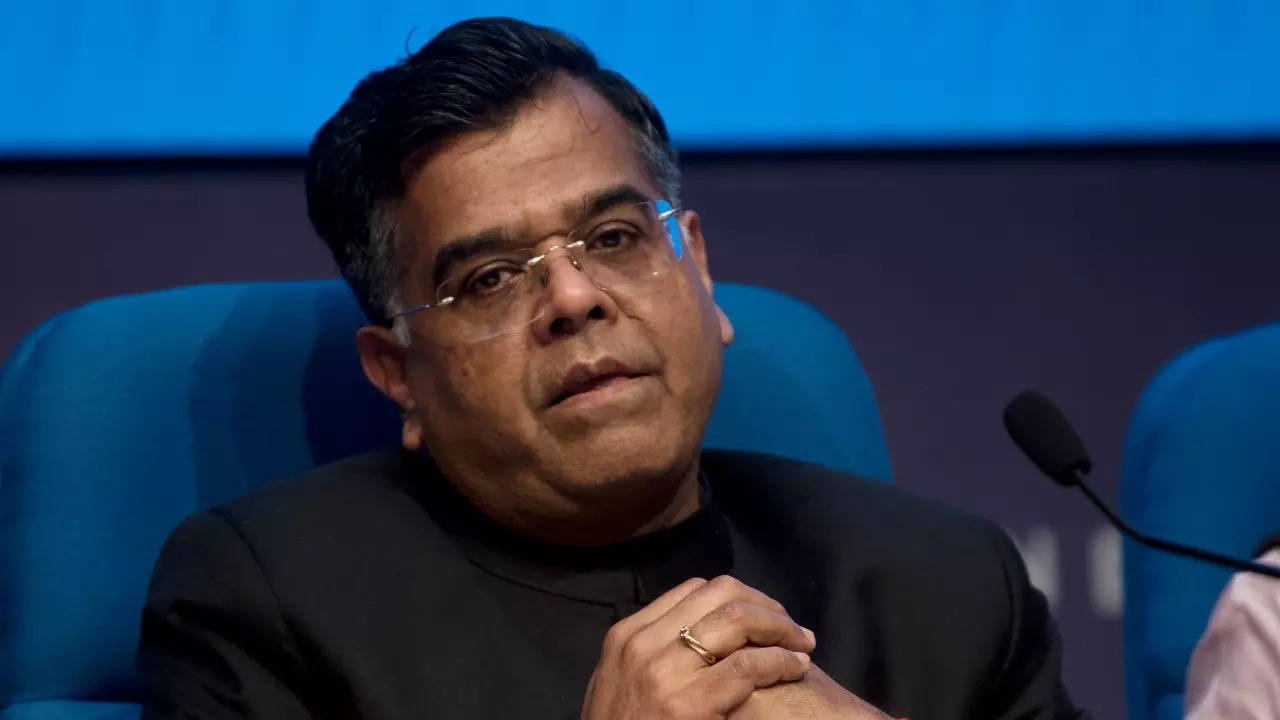Finance Secretary Announces Plan to Spend 60% of CAPEX Budget by September

Finance Secretary Announces Plan to Spend 60% of CAPEX Budget by September
The official stated that because “revenues at aggregate level” are proceeding according to the plan, the budget deficit would be contained at the desired level of 5.9% of the GDP in FY24.
With the state governments receiving interest-free capital expenditure loans and the infrastructure ministries investing money at a rapid rate,

According to Finance Secretary TV Somanathan, by September, the Centre would have spent 60% of the Rs 10 trillion capex expenditure for the current fiscal year. According to him, this would be made possible by the essential infrastructure ministries and agencies’ continued rapid expenditure rate and the front-loading of the delivery of capex loans to the state governments.
The secretary stated that food inflation is anticipated to moderate by September as fresh crops will enhance supply in response to the recent spike in inflation, which made the Reserve Bank of India’s prediction of average inflation of 6.2% in the current quarter appear to be an underestimate.
The official stated that because “revenues at aggregate level” are proceeding according to the plan, the budget deficit would be at the desired 5.9% of the Gross Domestic Product (GDP) in FY24.

“Price increases are seasonal. The price increase for perishable goods was significant. However, the supply reaction to that was as quick. It differs from wheat and rice harvests, which only occur twice a year.
The harvest cycle is reasonably quick when it comes to producing tomatoes and onions, which are picked more than once a year.
In line with the public investment-led economic recovery strategy, the Centre increased the capex objective by 36% on-year to Rs 10 trillion (including Rs 1.3 trillion in capex loans to states) for FY24 from Rs 7.36 trillion (including Rs 81,200 crore to states) of actual spending.
With the attainment of roughly 28% of the annual target in Q1FY24 compared to 23.4% in the same quarter last year, the government’s spending, particularly capex, has been strong.
By September, most major ministries’ capital expenditures, including those for the railway and roads, “will unquestionably be above 50% of their annual targets…could be around 60%,” Somanathan said.
In the first four and a half months of the current fiscal year, Railways has completed 44% of its annual capex of Rs 2.6 trillion (including Rs 2.4 trillion in budget assistance).
According to Somanathan, even though there is additional pressure on pricing because of the impending festival season, increasing the supply of many seasonal commodities during the next two months would lower costs.
After falling to 4.9% in June, retail inflation jumped to 7.4% in July, exceeding the Reserve Bank of India’s target range for the first time since February 2023. This increase has been caused by the steep rise in vegetable costs and high inflation rates in other food groups like grains, pulses, spices, and milk.
The government recently sold tomatoes through cooperatives for Rs 70 per kg, less than half the market price.

The government has also taken several actions to increase the supply of necessities. The government placed restrictions on tur and urad dal inventories in May to prevent stockpiling and speculation in the face of rising costs. Various organizations, including wholesalers, merchants, millers, and importers, are subject to the stock restriction. The decree is in force till October 31.
The Centre may have ordered all ministries to enhance capital spending in H1FY24 to prevent delays when half a dozen states have assembly elections by the end of 2023. This direction may be the cause of the rise in capex. It has also exempted the ministries from several cash control regulations.
The Centre’s quicker distribution of interest-free capex loans to states to expedite development investment is helping to boost overall capex in addition to the abolition of capex restriction.
According to Somanathan, the Centre has given the states loans totalling around Rs 40,000 crore so far in FY24; by September, these disbursements might total about Rs 65,000 crore or half of the Rs 1.3 trillion facility. The Centre had a Rs 1 trillion capital credit programme in FY23. However, the disbursements started after September 2022.
In a recent announcement, the Finance Secretary confirmed that 60% of the Capital Expenditure (CAPEX) budget will be spent by the end of September this year.
This commitment represents a significant push towards accelerating infrastructure and developmental projects essential for economic growth and recovery, particularly in the aftermath of challenges such as the COVID-19 pandemic.

Infrastructure spending is a proven stimulant for economic growth. The early deployment of the CAPEX budget is expected to catalyze various sectors of the economy by creating jobs and stimulating demand.
By allocating most of the funds earlier in the fiscal year, the government aims to expedite the completion of critical projects, thereby delivering benefits to the public sooner.
Spending a significant portion of the budget by September is a strategic move to counter the typical end-of-the-year capital expenditure slowdown for various reasons, including the holiday season and fiscal closing activities.
Such as roads, bridges, and public transportation systems.Including the expansion of healthcare facilities and procurement of equipment.To improve school infrastructure and promote digital learning.
In light of this accelerated spending, the Finance Secretary has also emphasized the importance of accountability and transparency. Rigorous monitoring and regular reporting mechanisms are expected to be implemented to ensure that funds are used effectively and for their intended purpose.

Ensuring the funds are used optimally and not rushed into projects without adequate planning. With the accelerated timeline, there is the risk of projects being executed hastily, leading to potential quality issues.
Such a significant injection of funds into the economy could exacerbate inflation.
The announcement by the Finance Secretary to spend 60% of the CAPEX budget by September is a bold and strategic move aimed at accelerating economic recovery and growth.
While the initiative promises to boost employment, improve infrastructure, and foster development across various sectors, it has challenges.
Effective governance, transparency, and careful project execution will be vital to ensuring that this accelerated spending yields the positive impact that the government intends.




